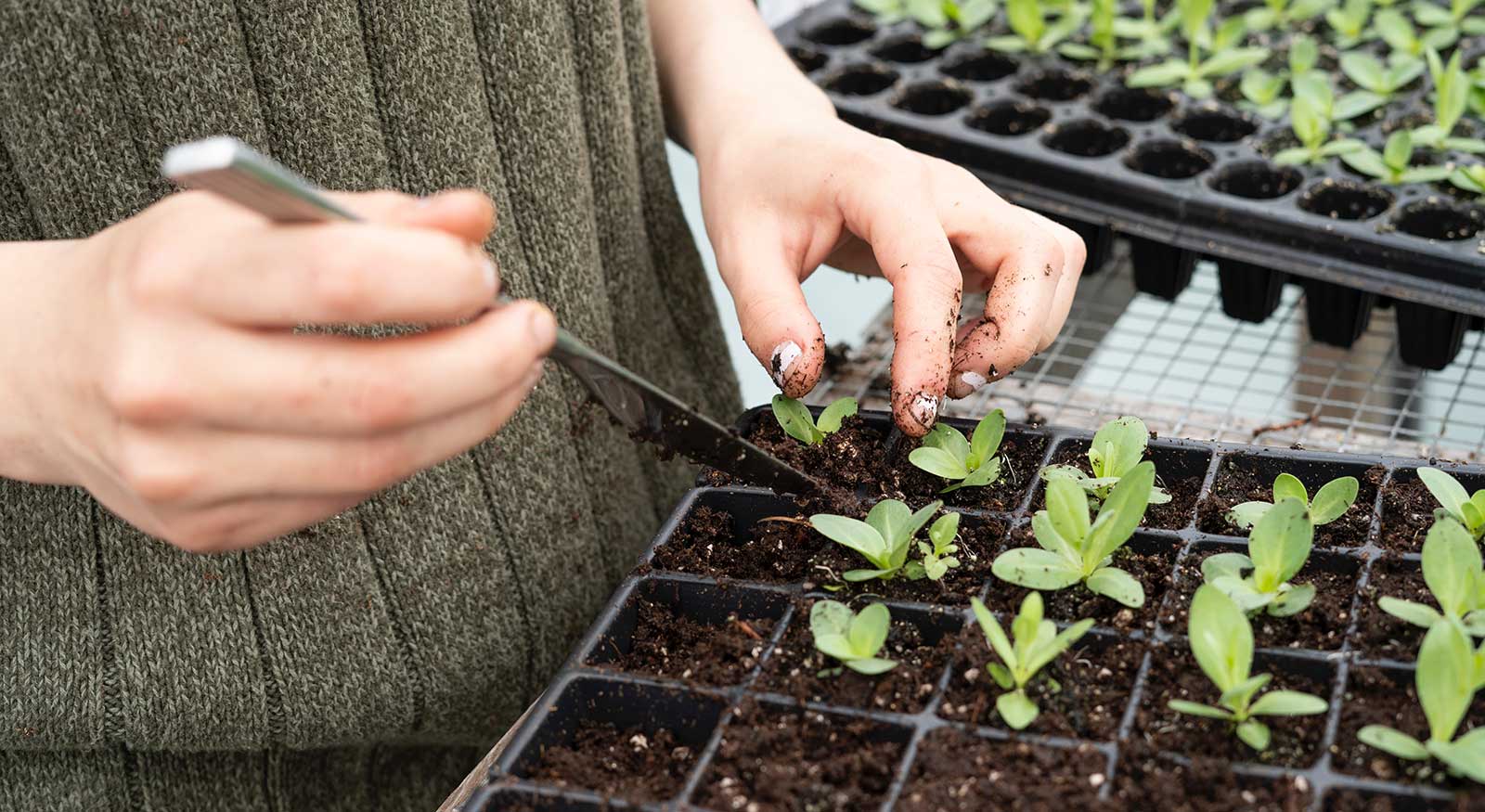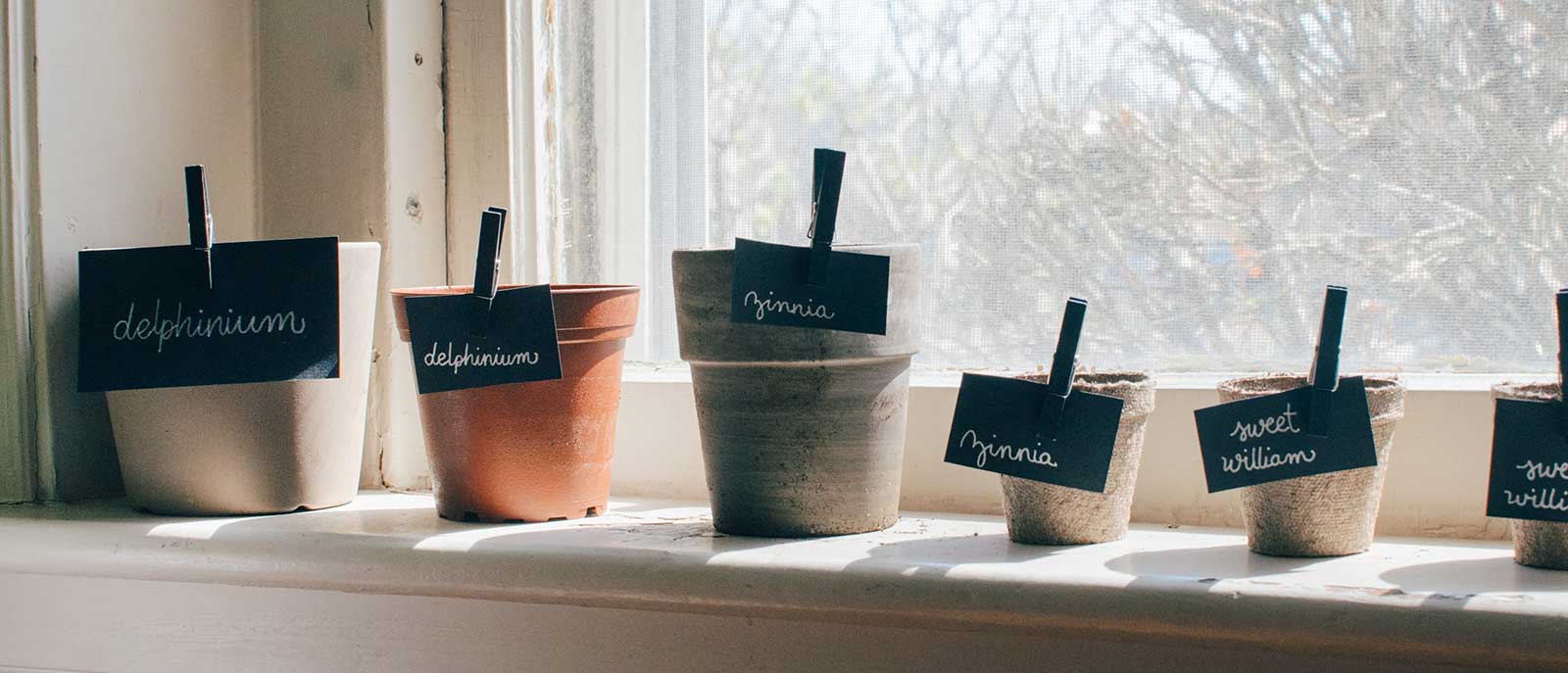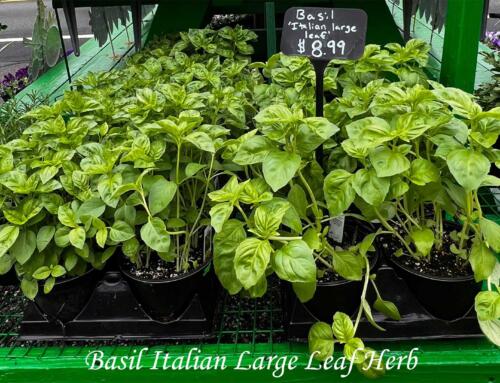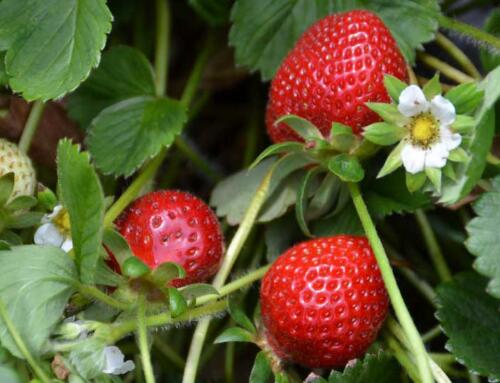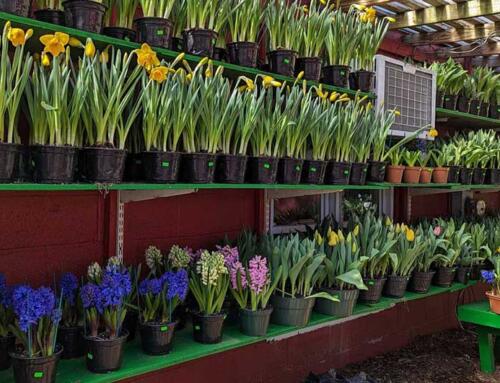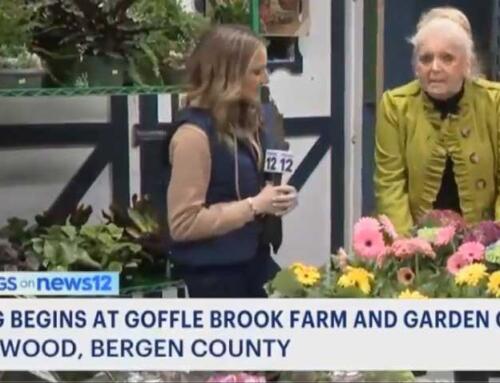Ornamentals & Flower Seed Sowing Dates
Get ahead on your gardening by starting seeds indoors and producing your own transplants. With a little planning, a few supplies and tools, plus some know-how, you’ll be on your way to seed starting success. Plant these seeds indoors, under lights, six to eight weeks before transplanting into the garden. Especially small seeds (including nicotiana, petunia and snapdragon) should be broadcast on a small seed tray. Once the seedlings have their first true leaves, carefully tease them apart and transplant into separate growing cells.
Keep in mind that indoor seedlings require ideal conditions to thrive. Placing starts on a window sill often will suffice. Check the back of the seed packet to see what temperature your seeds need. As a rule, the optimal temperature for germination is often 5-10 degrees warmer than the optimal temperature for growth. Water accordingly; moisture is critical for germinating seeds. They like a moist but not soggy environment. As gardeners everywhere begin the gardening season, these suggestions should help in raising strong healthy plants for enjoyment in the months to come.
10–12 weeks before your average last frost date
Columbine
Echinacea
Eucalyptus
Grass (Blue Grama)
Lavender
Petunia
Sea Holly
Verbena
8–10 weeks before your average last frost date
Bee Balm
Black-Eyed Susan
Cape Daisy
Carnation
Cottage Pinks
Dahlia
Dusty Miller
Feverfew
Lily Blackberry
Lobelia
Ornamental Pepper
Pansy
Salpiglossis
Salvia
Snapdragon
Statice
Stock
Sweet William
Viola
Yarrow
6–8 weeks before your average last frost date
African Daisy
Ageratum
Aster
Balsam
Bells of Ireland
Black-eyed Susan Vine
Bluebells (California)
Bluebonnet
Canterbury Bells
Castor Bean
Celosia
Chocolate Flower
Cleome
Coleus
Coreopsis
Craspedia
Cup and Saucer Vine
Cypress Vine
Delphinium
Four Foxglove
Gaillardia
6–8 weeks before your average last frost date
Gazania
Gomphrena
Grass (‘Bunny Tails’)
Hollyhock
Hyacinth Bean
Hyssop (‘Apache Sunset’, True)
Iceplant
Impatiens
Larkspur
Linaria
Lupine (Russell Blend)
Mexican Sunflower
Milkweed
Nicotiana
Painted Daisy
Penstemon
Phlox
Poppy (Iceland, Oriental)
Portulaca
Pumpkin on a Stick
Scabiosa
Shasta Daisy
Strawflower
Sweet Annie
Verbascum
4–6 weeks before your average last frost date
Alyssum
Amaranth
Ammi
Bachelor’s Button
Calendula
Cardinal Climber
Chinese Lantern
Cosmos
Flax (‘Scarlet’)
Forget-Me-Not
Grass (‘Frosted Explosion’)
Honeywort
Hyssop (Anise)
Marigold
Moonflower
Morning Glory
Orlaya
Sweet Pea
Zinnia
2–4 weeks before your average last frost date
Gourd
Money Plant
Nasturtium
Ornamental Millet
Sunflower
6–8 weeks before your average last frost date
Gazania
Penstemon
4–6 weeks before your average last frost date
Bluebonnet
Columbine
Feverfew
Flax (Blue and Breezy)
Gaillardia
Larkspur
Lavender
Lupine (Pixie Delight)
Pansy
Poppy
Snapdragon
Sweet Pea
Viola
2–4 weeks before your average last frost date
Bee Balm
Bells of Ireland
Black-Eyed Susan
Bluebells (California)
Calendula
Cleome
Echinacea
Flower Mix
Grass (Blue Grama)
Lily Blackberry
Love-In-A-Mist
Milkweed
Phlox
Shasta Daisy
Verbascum
Verbena
Wheat
1–2 weeks before your average last frost date
African Daisy
Alyssum
Ammi
Bachelor’s Button
Carnation
Chinese Lantern
Chocolate Flower
Coreopsis
Flax (‘Scarlet’)
Forget-Me-Not
Iceplant
Linaria
Painted Daisy
1–2 weeks after your average last frost date
Amaranth
Aster
Balsam
Black-Eyed Susan Vine
Broom Corn
Cape Daisy
Cardinal Climber
Castor Bean
Celosia
Coleus
Corn (Ornamental)
Cosmos
Cottage Pinks
Cup and Saucer Vine
Cypress Vine
Delphinium
Dusty Miller
Four O’Clock
Foxglove
Hollyhock
Hyacinth Bean
Hyssop (‘Apache Sunset‘, Anise)
Impatiens
Lobelia
Lupine (Russell Blend)
Marigold
Mexican Sunflower
Money Plant
Moonflower
Morning Glory
Nasturtium
Nicotiana
Orlaya
Portulaca
Salvia
Scabiosa
Stock
Sunflower
Sweet Annie
Sweet William
Zinnia
2–4 weeks after your average last frost date
Ageratum
Canterbury Bells
Dahlia
Gazania
Gomphrena
Hyssop
Statice
Yarrow
Seeds exist in a state of dormancy, absorbing oxygen, giving off carbon dioxide, and slowly using up their stored food reserves. During this process, the seed continually monitors the external environment waiting for ideal conditions specific to the particular seed. Once the ideal conditions occur, the seed breaks dormancy and germinates. The seedling gathers energy through its leaves through the process of photosynthesis and absorbs nutrients and water from the soil through the roots. As gardeners, our goal is to provide the optimal environment for germination and seedling growth.
For planting, use a seed starting mix that is “soil-less”. You can make your own, or buy ready-made products at our garden center. These mixes are light, and sterile. They are usually made up of a combination of peat moss, perlite, and vermiculite. Avoid using garden soil. It is too heavy for tender seedlings. When sowing seeds, pre-moisten the mix so the seeds are not disturbed by water after planting. It should be about the dampness of a wet sponge. Lighting is optimal for the best growth rate. Next, cover the trays with a plastic lid that allows light through but holds moisture in. Plastic bags work well. With adequate moisture, condensation will develop inside this tent or cover. Two 40-watt florescent bulbs in a shop light will do the trick and is inexpensive. Place your tray or containers under the lights and positioned just above the container cover. The lights should stay on for about 16 hours each day.
Keep an eye on the seeds daily. As soon as you notice them sprouting, remove the cover. Continue to add water as needed to keep the soil moist but not wet. Be sure to continue to raise your light, keeping it to within an inch or two from the tops of your sprouts. In about six weeks, the seedlings will be ready to transition into the garden.



